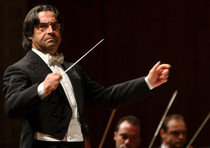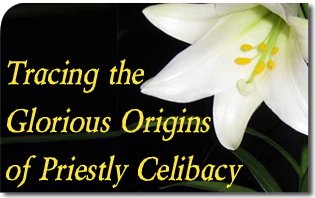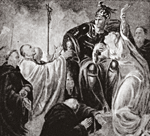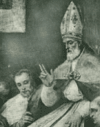May 19, 2011 (LifeSiteNews.com) - In recent months, media celebrity John Allen has been on a campaign to legitimize the dissenting, anti-life and anti-family views embraced by his publisher, the “National Catholic Reporter” (NCR). Let us call it the “Allen Strategy”.

John Allen Jr. during Salt & Light television interview
Salt & Light video frame
The Allen Strategy hearkens back to the 1990s, when Chicago’s Cardinal Bernardin sought to co-opt orthodox Catholics with the “common ground” and “seamless garment” initiatives. His apparent intent was to induce the faithful to compromise with liberal dissenters in order to promote “unity” in the Church. Inevitably he failed, although the Common Ground Project maintains a postmortem presence at Chicago’s Catholic Theological Union.
Allen incorporates this element into his overall approach with his claim that the Catholic Church has been splintered into numerous “tribes” during the “postmodern” period, due to the cultural fragmentation of society. His model presents a multipolar world inhabited by what he calls “pro-life Catholics, peace-and-justice Catholics, liturgical traditionalist Catholics, neo-con Catholics, church reform Catholics, feminist Catholics, and on and on”. Not coincidentally, “peace-and justice” “feminist” and “reform” are the labels that NCR uses to sugar-coat its dissenting ideology.
In Allen’s universe, the Catholic Church is not polarized between those who are faithful to its perennial teachings and those who oppose them—an inconvenient notion that highlights the unacceptable and increasingly marginalized position of NCR. Rather, the Church is “tribalized” among various groups that have legitimate differences in perspective. This permits Allen to smuggle in his assumption that those who write for his newspaper are in an analogous position to “pro-life Catholics” and “traditionalist Catholics” in their differences with the others. In other words, liberal dissenters are only one Catholic “tribe” among many.
Allen’s term “pro-life Catholic” speaks volumes about his own distorted perspective on the faith. He seems to regard “pro-life” as a mere type of Catholic, rather than an essential element of the faith. However, the deeper significance of Allen’s “tribal” model of modern Catholicism lies in the proposed solution to his contrived problem.
Writing about the divisions among his “tribes” in a
recent article, Allen opines that “Such diversity is healthy in principle, but destructive in practice if these tribes come to see one another as the enemy, and in many cases that’s precisely the situation. Compounding the problem is that these tribes have spent so much time moving down separate paths that they often have completely different senses of what the issues facing the church actually are, so on those rare occasions when they do rub shoulders, they often lack a common set of points of reference to sustain a conversation.”
So, for example, when the disgraced “theologian” Charles Curran is given space on NCR for
long and convoluted essays attacking the bishops’ pro-life teachings and defending the “pro-choice” position, and then is praised for it by
NCR itself we must not react with outrage. And when NCR’s openly homosexual columnist Kate Childs Graham
rejects the Church’s condemnation of sodomy—an article of the natural law recognized by virtually every society and religion in history—we are not to see her publisher as “the enemy.”
When we find
NCR writers defending nuns who are excommunicated for authorizing abortions, or
trashing the homosexual ministry group Courage for encouraging its members to remain celibate, we should not raise our voices in objection. Nor should we grimace with indignation when we read NCR
legitimizing heretical nun Jeannine Gramick’s campaign to legalize homosexual “marriage.” Rather we need “common points of reference” with such people, accepting them as just another species of Catholic.
As Allen uses very euphemistic language in his own columns to refer to the NCR agenda, and takes pains to present himself as “balanced,” one might easily conclude he doesn’t share in the anti-Catholic perspectives of NCR and its other columnists. However,
his own words in a recent NCR fundraising campaign leave little to doubt about the matter. He calls NCR a “precious gift, a gift to journalism, and a gift to the Catholic Church” and an “incredibly important vehicle for keeping Catholic conversation alive.” He adds that NCR is “about the only outfit” where “it is theoretically possible” to write objective, accurate stories.
The real problem for Allen and NCR: “evangelical Catholicism”
Later in the same article, Allen identifies the true source of the conflict between the “tribes” that he so laments. It is caused by what he calls “evangelical Catholicism,” which is creating “pressure” on “Catholic identity.” Even more alarming for the dwindling faction of sixties radicals that Allen represents is the fact that this movement is coming from both the upper and the lower levels of the Church.
“Whether anyone likes it or not, pressure related to Catholic identity is here to stay,” he writes. “This is not only because a fragmented, post-modern world always makes identity contentious, but because one key trend in today’s church is precisely the rise of ‘evangelical Catholicism.’”
Allen informs us that “evangelical Catholicism” is “premised on recovering a strong sense of Catholic identity (including traditional markers of Catholic thought, speech and practice, such as Eucharistic adoration and Marian devotion) and using that identity as a lever to transform culture - beginning with the culture of the church. This evangelical wave comes from the top down, in the sense that policy-makers are understandably concerned to defend Catholic identity vis-à-vis secularism. Yet it also comes from the bottom up, in the form of strong evangelical energy among younger priests, religious, theology students and lay activists.”
What are aging radicals to do in the face of this youthful fidelity to the Catholic religion? If you can’t beat ‘em, join ‘em—or co-opt them, to use the more precise term. It is impossible to reconcile NCR’s dissenting positions with the teachings of the Catholic Church, to which they stand in stark contradiction. However, if orthodox Catholics can be induced to join organizations or movements that include dissenters, they are likely to stop fighting and cooperate, giving the dissenters the legitimacy they need to continue their subversion of the faith.
“What the church needs instead are spaces in which relationships among Catholics of differing outlooks can develop naturally over time,” Allen opines. “The plain fact of the matter is that such spaces have been badly attenuated by the ideological fragmentation of both the church and the wider world.” Within such zones, liberal dissenters and faithful Catholics would work together, creating a “hybrid vigor” through synergistic action.
Among the groups he names to perform this amalgamating function is Canada’s Salt and Light Television, run by Allen collaborator Fr. Thomas Rosica. In a recent
Salt and Light interview with Rosica (beginning at 19:49), Allen promises viewers that there will be a “new spiritual awakening” where “we realize the sterility of this dead-end street of importing the culture wars into the Church” and names Salt and Light as an institution that conforms to his “zones of friendship” concept.
“One of the things that has always struck me about you personally and the Salt and Light network generally is that it genuinely is open to all of the different tribes of the Catholic landscape. that is you are not speaking from one side of the street, you are not speaking for one constituency, you are speaking for, and to, and about the entirety of the Church,” Allen gushes to an affirming Rosica.
Unfortunately, Allen’s “tribal” model is shared by many other Catholic leaders as well, who see themselves not as protectors of the faith and morals of the laity, but rather managers who balance competing factions against each other in order to maintain a peaceful equilibrium in the Church. Those who take this view seem to care little for the essential message of the Gospel— conversion from error and sin to the light of truth and of love. They are fundamentally politicians rather than leaders, and they are among the most useful allies of heretics, dissenters, and other malcontents who undermine the Church’s salvific mission.
Ironically, the true source of the “polarization” in the modern Church is arguably to be found in the same relativistic concept of the faith pushed by Allen, which leads so many into a deluded sense of Catholic identity. A truly charitable approach to discipline would not permit those who promote an anti-life, anti-family agenda to deceive themselves into believing that they are authentically Catholic. The accompanying divisions owe their existence to a fundamentally uncharitable laxity of discipline on the part of many bishops, which permits confusion and strife where there should be clarity and harmony, an authentic unity based on the truth.
Allen’s Plan B
If the “common ground” aspect of the Allen Strategy fails, however, Allen has a backup plan, which we shall call “Plan B.” In Plan B all pretense of reconciliation and syncretism is dropped. Faithful Catholics are tar-brushed as extremists, while NCR’s dissenting viewpoints are portrayed by implication as the reasonable middle ground in the Catholic Church.
Allen’s choice of smear-term, “Taliban Catholicism,” has become standard fare in his talks since he first used it in
a 2006 speech, in which he expressed his concerns about new movements to restore “Catholic identity.” Despite his protests that he doesn’t apply the term to any particular person or group, there is little doubt of its meaning within the NCR paradigm.
Allen warns of a “defensive and polemic Catholic traditionalism that depends upon enemies, perceived or real, to give it strength. This reaction too fudges the identity question by attempting to define Catholicity in terms of the narrow borders of one or another Catholic tribe, which amounts to an artificial limitation of our universality.”
The universality of the Church, therefore, depends on an inclusiveness that contains all of Allen’s “tribes”—both those that defend the faith and those that distort and undermine its teachings. The latter are not to be seen as “enemies,” lest one fall under the rubric of extremism. All must be included, and those who oppose this “universality” are the moral equivalent of Muslim fanatics who engage in terrorism, oppress women, and prohibit kite-flying.
The answer to the wicked Catholic Taliban, Allen assures us, is to be found in St. Thomas Aquinas’ concept of the “just mean,” which he regards as the veritable essence of Catholicism.
“In the long run, what almost always prevails in the Church is what Aquinas called the ‘just mean’ between such extremes,” Allen assures his readers. “Assuming this pattern holds, it suggests that the future will belong to those voices able to articulate a robust sense of Catholic distinctiveness, but one which does not shade off into a Taliban Catholicism that knows only how to excoriate, condemn, and smash the idols of ‘the other.’”

Fr Rosica in Rome calling for Church oversight of the Catholic Internet
Salt & Light video frame
The “just mean” of Aristotle and St. Thomas is a favorite theme of Allen’s when he addresses the issue of conflict in the Church, but the star journalist has somehow forgotten that Thomas regarded virtue as a mean between extremes only in the case of the moral and intellectual virtues, which are directed to the created world. With regard to the theological virtues of faith, hope and charity, which are directed to God,
Thomas writes that there can be no excess, no extreme too great. Perhaps the Angelic Doctor himself is in danger of Allen’s “Taliban” smear.
If we wish to see an example of the Allen Strategy in action, we have no further to look than Salt and Light’s Fr. Thomas Rosica. Without a hint of irony, Rosica has launched
his own campaign to tar-brush pro-life and pro-family groups with Allen’s
“Taliban Catholicism slur” and
other similar
epithets, while simultaneously calling for civility and moderation.
Although Rosica can count on the backing of many bishops as well as chancery and episcopal conference bureaucrats, his actions reveal an increasing frustration with the liberal establishment’s inability to control the flow of information. Rosica has gone so far as to
call for “oversight” of the Catholic internet by the hierarchy—a
concept discarded at the Vatican’s recent meeting held for bloggers.
What the Allen Strategy really means
And it is here that we arrive at the deeper meaning of the Allen Strategy. Although it is distressing to witness such a famous and capable reporter putting his talents to ill use, Allen’s words can only inspire hope, if read in their proper context. The Allen Strategy, which has no real possibility of succeeding, is nothing less the swan song (if swans will excuse the comparison) of a dying movement that has no recourse left but to silly subterfuges and weak protests against “extremism.”
The defeat of NCR’s phony, neo-modernist “peace and justice Catholicism” is in large part the product of lay movements exercising the very functions that liberal dissenters hoped to expropriate for their own ends following Vatican II, a council for which the latter professes a profound reverence. Although the legitimacy of lay movements to protect orthodoxy has always been recognized in the Church, the concept was engraved in stone in the new Code of Canon Law, which explicitly recognizes the right and even the obligation of Catholics to inform their prelates, and one another, of their concerns regarding the faith.
To the dismay of NCR and the movement it represents, this new emphasis on lay involvement in the Church did not spawn a proletarian army to carry out their “peace and justice” revolution. It produced instead the “evangelical Catholicism” that so troubles Allen and his publisher. In recent years, “evangelical Catholicism” has made increasing use of the Internet as well as television, augmenting its influence dramatically. The Church’s establishment, so accustomed to controlling the Catholic means of communication, is finding that modern communication is a two-way street.
The response it is hearing is a clear “no” to the culture of death and sexual perversion, and to compromise and laxity with regard to the truths of the faith. It is a voice that will only grow louder until the Catholic faith, in all its integrity, is fully upheld and protected in the Church.
John Allen and his unfortunate patron are facing an inexorable imperative of Catholicism: the tribe of life must prevail over the tribe of death. Then, and only then, will authentic justice and peace reign among Christians.
——————-
Matthew Cullinan Hoffman is LifeSiteNews’ Latin America correspondent. His award-winning articles have appeared in many major newspapers, including the Wall Street Journal, Sunday Times of London, Christian Science Monitor, Detroit News, and Nicaragua’s La Prensa. He can be reached at mhoffman@lifesitenews.com.




 MARLENE QUARONI | FCArchbishop Wenski lights the Easter fire outside the cathedral at the start of the Easter vigil. Father Richard Vigoa, the archbishop's priest secretary is pictured to his left.
MARLENE QUARONI | FCArchbishop Wenski lights the Easter fire outside the cathedral at the start of the Easter vigil. Father Richard Vigoa, the archbishop's priest secretary is pictured to his left. FILE PHOTOArchbishop Wenski lifts up a chalice given to the archdiocese by Blessed Pope John Paul II during a Mass in celebration of his beatification. Father Richard Vigoa writes that "The liturgical arts, whether in the form of sacred music, architecture, art, vestments or vessels, should move us beyond the superficial and mere aesthetics and encourage us to plunge ourselves more deeply into the mystery of our faith."
FILE PHOTOArchbishop Wenski lifts up a chalice given to the archdiocese by Blessed Pope John Paul II during a Mass in celebration of his beatification. Father Richard Vigoa writes that "The liturgical arts, whether in the form of sacred music, architecture, art, vestments or vessels, should move us beyond the superficial and mere aesthetics and encourage us to plunge ourselves more deeply into the mystery of our faith."





